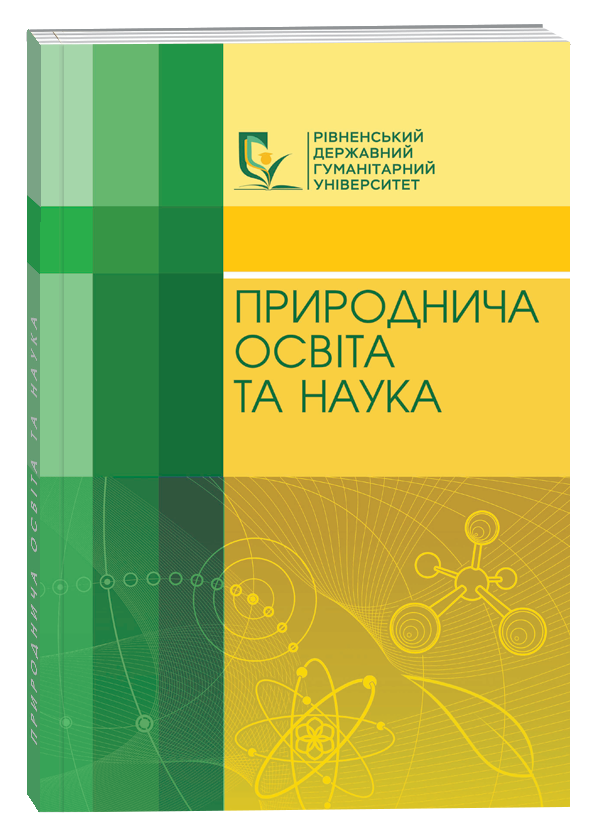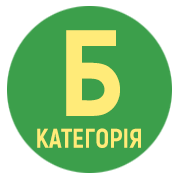PECULIARITIES OF THE COMPONENT WAREHOUSE OF THE TOURIST AND RECREATIONAL SYSTEM
Abstract
The article defines the structural features of tourist and recreational systems. It is noted that the dynamism of the tourist and recreational system is due to the influence of numerous factors, which increases the level of risk in this area, which is significantly influenced by the external environment. It is proved that high dynamism contributes to the transformation of tourist and recreational systems, which, in turn, allows to improve integrated socio-economic territorial systems. The key component of the tourist and recreational system is identified as a natural one, which plays a crucial role in its functioning. The two main components of the definition of the tourist and recreational system are studied: recreation and tourism. The main differences between the concepts of “tourism” and “recreation” are studied, which are considered in several aspects: by purpose, tourism involves traveling to visit new places, cultural attractions, leisure or business, and recreation involves activities that promote recuperation and relaxation, often associated with on-site recreation (e.g., sports, nature walks). In terms of location, tourism is movement from one place to another, while recreation is at home, in recreational areas, without the need to travel. In terms of duration, tourism lasts from several days to several weeks, while recreation is a short-term activity. From an economic perspective, tourism attracts investment in infrastructure, while recreation involves personal spending and activities. From a social perspective, tourism is an interaction between tourists and the local population, which can lead to cultural exchange, while recreation can be individual or group. It is found that the merger of the concepts of “tourism” and “recreation” is manifested in the analysis of the term “resource” in the context of tourism. It has been established that natural and anthropogenic resources, initially being natural formations, can subsequently turn into tourist resources. It is investigated that recreational resources are transformed into modified natural conditions and cultural and historical objects that are adapted to technological requirements in response to public needs and can be directly used for recreational services.
References
2. Давидюк Ю. В. Зміст та специфічні властивості туристсько-рекреаційних послуг. URL: https://conf.ztu.edu.ua/wp-content/uploads/2016/06/279.pdf (дата звернення: 02.10.2024).
3. Запотоцький С., Горин І. Сучасні тенденції розвитку лікувально-оздоровчого туризму у Львівській області. Вісник Київського нац. університету ім. Тараса Шевченка. Сер. Географія. 2018. Вип. 3 (72). С. 70–76. URL: http://surl.li/synzs. DOI: http://doi.org/10.17721/1728-2721.2018.72.12.
4. Каленюк І. С., Котенко Т. М. Соціальні аспекти розвитку рекреації та туризму в Україні. Демографія та соціальна економіка. 2016. № 2 (27). С. 89–101.
5. Кравченко Н. О. Рекреаційне господарство Полісся: сучасний стан та перспективи розвитку. Ніжин : МІЛА-НІК, 2007. 172 с. URL: https://tourlib.net/books_ukr/kravchenko1-1.htm (дата звернення: 02.10.2024).
6. Кузик С. Теоретичні проблеми туризму: суспільно-географічний підхід : монографія. Львів : Вид-во ЛНУ ім. І. Франка, 2010. 254 с.
7. Лебедєв І. В. Рекреація і туризм як фактори розвитку людського потенціалу. Вісник соціально-економічних досліджень. 2021. № 3/4. 78–79. С. 143–157. URL: https://journals.uran.ua/vsed_oneu/article/view/260802 (дата звернення: 02.10.2024).
8. Любіцева О. О. Ринок туристичних послуг. Київ : Альтерпрес, 2002. 436 с.
9. Мазур Ф. Ф. Соціально-економічні умови розвитку рекреаційної індустрії : навч. посібник. Київ : Центр навчальної літератури, 2005. 96 с.
10. Основи рекреалогії (економіко-екологічний та маркетинговий аспект) : навч. посібник / Гродзинська І. О., Нездоймінов С. Г., Гусєва О. В., Замкова А. В. Київ : Центр учбової літератури, 2014. 264 с.
11. Павлов В. І., Черчик Л. М. Рекреаційний комплекс Волині: теорія, практика, перспективи. Луцьк : Надстир’я, 1998. 122 с.
12. Паламарчук М. М., Паламарчук О. М. Економічна і соціальна географія України з основами теорії : посібник для викладачів економічних і географічних факультетів вузів, наук. працівників, аспірантів. Київ : Знання, 1998. 416 с.
13. Поколодна М. М. Рекреаційна географія : навч. посібник. Харків : ХНАМГ, 2012. 275 с.
14. Про туризм : Закон України від 15.09.1995 № 324/95-ВР. Відомості Верховної Ради України. 2004. № 13. С. 180.
15. Рекреація як соціально-культурне явище, її різновиди та характеристики / Ніколенко О. І., Гамма Т. В., Зарічанська Л. О. та ін. Rehabilitation and Recreation. 2022. № 12. С. 144–149. DOI: https://doi.org/10.32782/2522-1795.2022.12.19.
16. Скабара Р. М. Туристично-рекреаційні ресурси: поняття та особливість використання на курортах. URL: http://surl.li/crtgir (дата звернення: 02.10.2024).
17. Формування національної туристичної системи: ретроспективи наукового пошуку / Скляр Г. П., Дробиш Л. В., Карпенко Ю. В. та ін. Науковий вісник Полтавського університету економіки і торгівлі. 2022. Вип. 1 (105). С. 123–128.
18. Смаль І. В. Туристичні ресурси світу. Ніжин : Ніжинський держ. університет ім. Миколи Гоголя, 2010. 336 с.
19. Топчієв О. Г., Яворська В. В., Ніколаєва О. Рекреаційно-туристична діяльність як складова регіональних господарських комплексів: концептуально-понятійний огляд. Науковий вісник Херсонського держ. університету. Серія. Географічні науки. 2016. Вип. 5. С. 128–134.
20. Менеджмент туристичної індустрії : навч. посібник / за ред. І. М. Школи. Чернівці : ЧТЕІ КНТЕУ, 2005. 596 с.
21. Монастирський В. Р. Природні ресурси і рекреаційні комплекси світу : навч. посібник. Львів : ННВК “АТБ”, 2022. 200 с.






